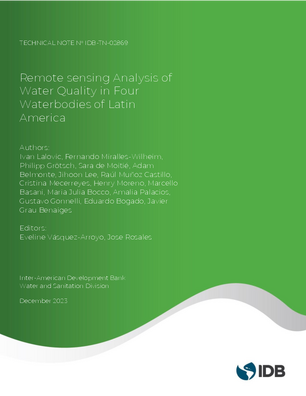Remote Sensing Analysis of Water Quality in Four Waterbodies of Latin America
Date
Jan 2024
The pilot study introduces remote sensing methods for monitoring water quality to measure, understand, and manage impacts on vulnerable water bodies that are part of the IDBs Water and Sanitation portfolio. The water bodies selected for this study include: Guanabara Bay in Río de Janeiro, Brazil; Lake Titicaca in Bolivia and Peru; Ypacaraí Lake near Asunción, Paraguay; and the Río Reconquista Basin near Buenos Aires, Argentina. This study focuses on the development and implementation of an automated remote sensing data processing chain enabling detection of phytoplankton abundance (chlorophyll-a) as a proxy for pollution by organic and inorganic nutrients, as well as sediments (and turbidity or water clarity), which are the major water quality issues identified across the IDBs Water and Sanitation portfolio. In addition to providing a baseline assessment of water resources at four select locations over time, the collected remote sensing data will be used to rapidly assess changes in water quality conditions resulting from socioeconomic changes introduced by local and regional responses to the Covid-19 pandemic and associated lockdown conditions. Remote sensing applied to water quality monitoring is a valuable emerging technology that can provide geospatial data about water quality and nutrient, bacterial, and industrial pollution from urban and rural sources. The methodology presented in this paper uses cloud computing, which allows rapid monitoring deployment and scalable coverage across numerous watersheds and geographies. Although this paper presents a comprehensive analysis of this entirely new source of water quality data across the sites and locations of interest, a more detailed analysis can be performed by examining different timeframes (e.g., entire data set or monthly aggregates) within these watersheds. Additional insights may be revealed by further combining the water quality data sets of this work with other sources of information, including local sensors, information from water and sanitation utilities, and a more detailed analysis of the timing of location conditions and their local impacts.




